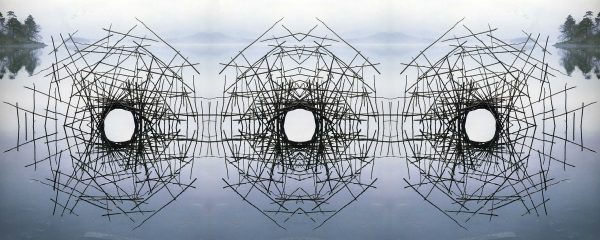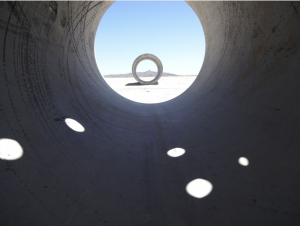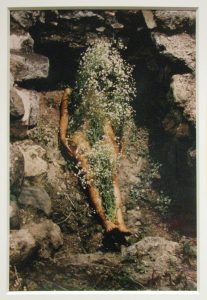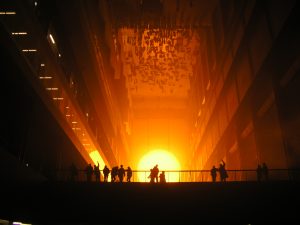

As Britain recovers from a summer in which quite a few confronted the threat of wildfires and drought, and which still left London’s regularly lush inexperienced spaces sunshine-bleached, the realities of the altering weather have under no circumstances felt a lot more fast. Quite a few artists are reconsidering their apply to meet the stark realities of the minute, as acquainted weather conditions styles turn out to be more erratic and fears loom that, with out urgent intervention, existence as we know it could be still left radically altered in the coming decades.
Environmentally engaged art has taken numerous guises during the class of artwork history. Land art— art that takes the earth as its subject— very first emerged as a motion in the late 1960s in tandem with the broader social and political shifts of the era. The classical landscape art of the 17th century had come to seem to be quaint and previous-fashioned to radical-leaning younger artists at a time when submit-war minimalism and the burgeoning conceptual artwork movement dominated gallery spaces. Otherwise acknowledged as Earthworks, course of action artwork, or ecologic art, land artwork engaged different media—most frequently sculpture, pictures, or web site-unique installations that sought to transform the marriage of the viewer to their purely natural surroundings. Operates were being often installed in remote and rural destinations artists were eager to crack away from increased urbanization and the cultural monopoly major cities held about inventive output. Regardless of whether the outcome was totemic, massive-scale items carved into the earth itself, or ephemeral, short-term interventions intended to mirror the ebb and flow of organic processes, land artists occupied a new terrain as they examined how a put up-industrial environment had altered the sophisticated and significantly fragile connection in between guy and character.

Robert Smithson’s Spiral Jetty and The Earthworks Motion
Perhaps the most legendary perform of this era is Robert Smithson’s Spiral Jetty (1970). Reminiscent of an unfurling fern frond, the 1,500 foot very long spiral extends anti-clockwise from the north-eastern shore of Utah’s Good Salt Lake. Reaching 15-ft large, it is shaped of six thousand tons of soil and basalt rock. Smithson selected the locale for its distinct ecological functions. The lake is a terminal basin—what’s recognised as endorheic—meaning it is essentially barren and lifeless. The place stands in the shadow of unused oil rigs, ghosts of industry that loom about the fluctuating drinking water degrees of the basin. The significant presence of algae in the water gives it a purplish tint (in aerial visuals the lake typically seems a red wine shade). The basin is prosperous with salt-crystal deposits with a filigree-like texture that fascinated Smithson and which he took as his inspiration for the shape of the jetty. A visit to the Spiral Jetty is to practical experience it as an outlook, an invitation to totally embody the landscape and its shifting scale and dimension.

Gals Artists in the 1970s-1980s Land Art Motion
In the nearby Excellent Basin Desert, Nancy Holt—who was married to Smithson until finally his demise in 1973— developed Sun Tunnels (1973-1976), 4 concrete cylinders reaching 18-foot prolonged and intended to frame the actions of the increasing and location solar. Every tunnel consists of a series of modest holes that map decide on constellations, small apertures as a result of which to check out the earth’s rotations and celestial shifts. Holt was not the only female artist to add to the motion. Hungarian-American artist Agnes Denes (born 1931), deemed a pioneer of environmental art, infused her do the job with social-political concepts. In 1968, she established Rice/Tree/Burial, a site-certain functionality piece in which she sowed rice into a discipline in Sullivan County, New York. She wrapped thick, industrial chains all around encompassing trees and buried a capsule of her haikus beneath the floor, to continue being there for a thousand years. The rice represented sustenance, conception, and initiation the chained trees spoke to bondage and human interference and the poetry was consultant of the summary, creation alone. In 1982, Denes made Wheatfield: A Confrontation on a piece of landfill in Battery Park Metropolis on Manhattan’s southern suggestion. The two-acre area of grain was an act of protest, supposed to spotlight expanding ecological concerns and widening financial inequality. The wheatfield would previous only 3 months, but its lasting image is a placing juxtaposition— the clash of the natural with the man-designed, a stirring rise up in opposition to the imposing properties of Wall Street that continue being emblematic of present day capitalism.

Cuban-born artist Ana Mendieta (born 1948) was influenced by visits to pre-Colombian web-sites in Mexico and Central The united states. She was drawn to pantheism and checking out feminine archetypes. In Silhueta (1973) she painted her silhouette into sand, carving the outline of her body into the earth, etching it into clay beds, sand formations and rock faces. She applied organic supplies like moss, branches, or flowers to define abstract female figures. Mendieta termed her follow ‘earth-overall body-work’, and saw her artwork as a implies to dialogue with the all-natural earth as an emigrant extracted from her indigenous land, she sought to re-set up the bond to among self and habitat. She was ultimately capable to return to Cuba, carving female forms into limestone grottos in the outskirts of Havana, in advance of her premature death in 1985.

The dramatic scope of the American West—with its deserts, mountain ranges, arroyos— offered a form of spaciousness that invited massive-scale resourceful thinking. Much of the seminal do the job of the Earthworks movement can trace its origins to prehistory—whether petroglyphs, Palaeolithic cave paintings, or Aztec stone sculpture Robert Smithson was possible motivated by Indigenous American serpent mounds and the Nazca Lines of Peru. The adjacent progress of land art in the United kingdom would take a unique kind, to fulfill the contours of the land alone.

Land Artwork in Britain 1970s-current
The Uffington White Horse is a mysterious, 360-foot horse carved into the Oxfordshire countryside, the grooves of its classy limbs filled with white chalk. Some archaeologists think the horse to be an case in point of a photo voltaic deity, a neolithic thought in which the sunlight travelled across the sky on a horse-drawn chariot. Like close by Stonehenge, aspect of the attract the white horse, now 3,000 yrs old, is the mythos that surrounds its unknowability. British topography is dotted with land-dependent artefacts that very likely held non secular significance for Celtic and druid tribes, and were extremely influential to British artists of the early land art period of time.
Andy Goldsworthy (born 1956) results in contemplative work delicate to the temporal capabilities of the land. Applying uncovered materials— feathers, pinecones, icicles— he makes formations that provide as meditations on pure rhythms. In 2003, Goldsworthy designed Drawn Stone in the de Youthful museum in San Francisco working with imported sandstone from his hometown in Yorkshire. He took a hammer to the rock to generate unpredictable breakages reminiscent of the fault lines of the city itself. The lines have been minimal, discrete, and often went unnoticed the work captured the delicate, somewhat ominous mood that permeates a town which professional just one of the deadliest earthquakes in history and stays vulnerable to extreme tectonic shifts.

In 1972, English sculptor Hamish Fulton (born 1946) put aside his resources and took to the street. A self-termed ‘walking artist’ Fulton pioneered wayfaring as a artistic act, employing textual content, illustration and pictures to trace his routes by the British countryside. The art is the journey by itself. Fulton’s walks are a meditation, a ritual. Like Fulton, sculptor Richard Very long explores going for walks as art form in A Line Produced by Walking (1967). As a result of ritual and repetition, Extensive treads into the turf right up until new tracks and paths are fashioned in the landscape. An exploration of memory and wayfinding, his perform remembers a minimalist, anti-materialist solution, a critique of the buyer-centered art-market place.

Present day Eco-artwork in the Age of the Anthropocene
As we grapple with what it suggests to inhabit the so-referred to as Anthropocene, a time of expanding geological importance, several artists are combining their perform with political activism. In 2002, American artist Aviva Rahmani positioned four large boulders in Vinalhaven Island, Maine, and painted them blue. She thought of the operate an ‘ecovention’ intending to draw notice to an obstructed causeway on the Pleasurable River. Her prepare succeeded, leading local authorities to donate $500,000 to the restoration of the estuary. Pembrokeshire-primarily based Jon Foreman will take the beaches of Wales as his canvas, generating hanging, whorling designs from various colourful flotsam. Dutch photographer Thirza Schaap requires a various strategy to seashore-combing with her collection Plastic Ocean, making use of litter and squander she finds washed up on the shoreline to develop striking, still-everyday living compositions that illuminate the risk of over-consumption.

Icelandic-Danish artist Olafur Eliasson—best acknowledged for his Turbine Corridor fee The Temperature Undertaking (2003) – in which site visitors bathed in the warm shine of a big, glowing sun— has extensive woven environmental consciousness into his function he not long ago established Earth Speakr– an augmented fact application in which youngsters are invited to style and design a CGI face which maps their expressions. Faces are then transplanted onto the earth’s surfaces, providing voice to their fears about the environmental disaster and setting up a new consciousness all over coexistence, reciprocity and stewardship. Olafur Eliasson Studio not too long ago dedicated to reaching carbon neutrality, such as a no-fly rule in fee contracts to transportation substance, producing a template for other artists to do the similar as they meet up with the calls for of a shifting globe.






